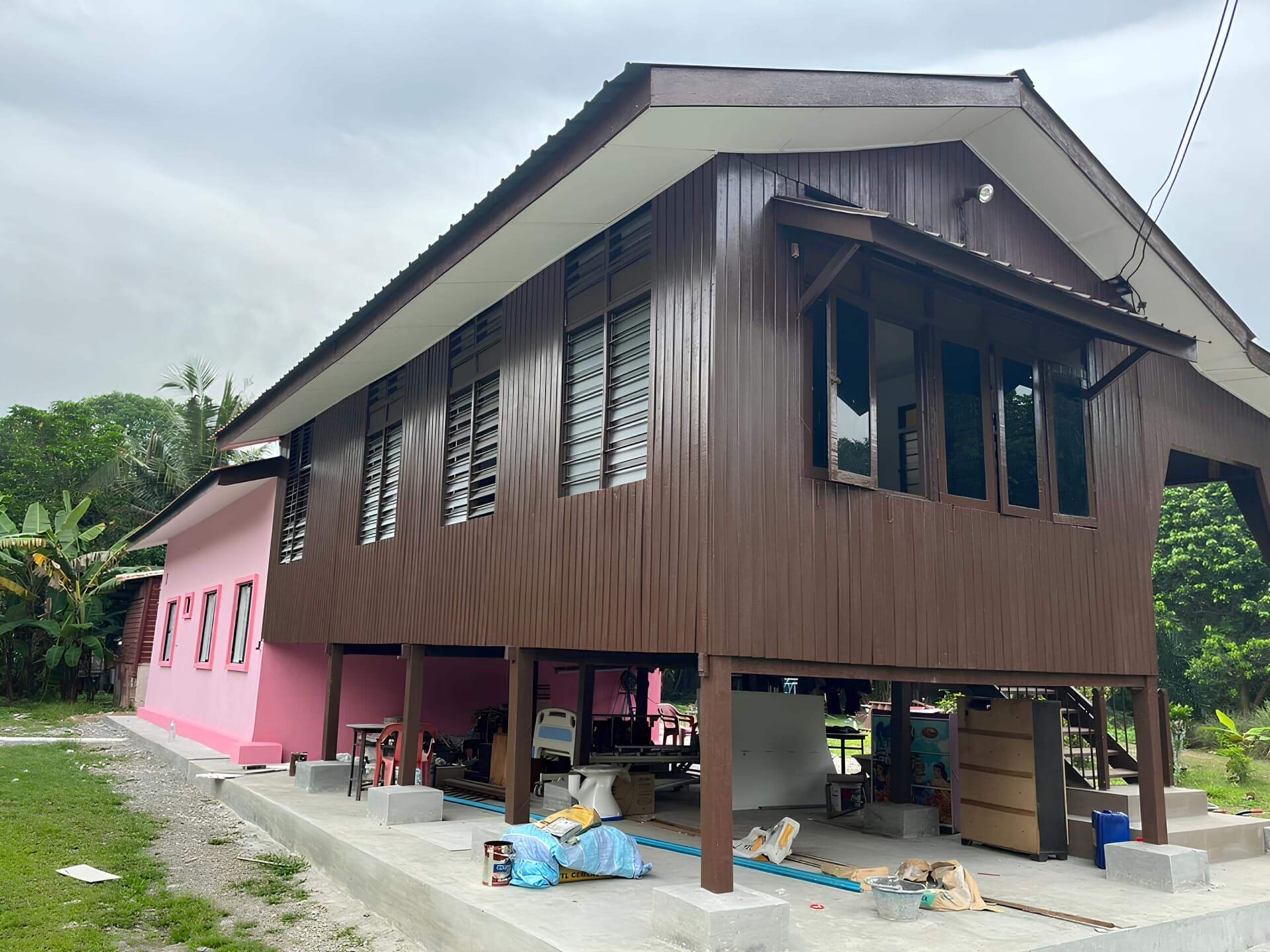When it comes to the construction industry, most of us are quick to think about towering skyscrapers or expansive residential developments. But behind every impressive structure is a complex web of partnerships, especially with suppliers. In Malaysia’s bustling construction scene, selecting the right suppliers can make the difference between a smooth project flow and a logistical nightmare. It’s not just about getting materials; it’s about building relationships that bring value, quality, and efficiency to your projects. In this article, we’re diving into why partnering with the right suppliers is crucial for your construction ventures. Plus, we’ll share seven handy tips to help you choose partners that can truly elevate your game. So, let’s roll up our sleeves and get into it!
Understanding the Importance of Supplier Relationships in Construction
In the construction industry, forging strong partnerships with suppliers can be a game-changer. When you choose the right suppliers, you’re not only ensuring that you receive high-quality materials but also establishing a network of support that can help you navigate challenges in the project. These relationships often lead to better communication, which is essential for success. A good supplier will understand your timelines and can accommodate changes, reducing project delays and ensuring smooth operations on site.
Furthermore, strong supplier relationships can open up opportunities for cost savings and innovative solutions. When suppliers feel invested in your projects, they’re more likely to share insights about new products or materials that can save money or enhance efficiency. This collaboration can lead to creative problem-solving, which is vital in a field where unexpected issues often arise. Plus, having reliable suppliers on your side means you can avoid last-minute scrambles for materials, keeping your project running on schedule.
Ultimately, nurturing these relationships is about more than just transactions; it’s about building trust. When suppliers trust you, they’re more likely to prioritize your needs, which can translate into better pricing and access to premium materials. Regularly engaging with your suppliers through meetings, feedback sessions, or even informal check-ins can strengthen these bonds. Here are some key aspects to keep in mind:
- Open Communication: Always keep lines of communication clear and honest.
- Mutual Respect: Treat your suppliers as partners rather than just vendors.
- Long-Term Vision: Aim for a long-lasting relationship instead of one-off deals.

Evaluating Supplier Reliability and Performance Metrics
When it comes to construction, relying on the right suppliers can make or break your projects. To assess supplier reliability, focus on several key aspects. First, consider their track record—how long they’ve been in business and their reputation in the industry. Look for suppliers who have consistently met deadlines and maintained quality standards. Also, seek feedback from other contractors about their experiences, as personal testimonials can provide valuable insights into the supplier’s performance.
Another important metric is response time. A reliable supplier should be prompt in addressing inquiries or issues that arise. Ask potential suppliers about their average response time and how they handle emergencies. You can also evaluate their flexibility—how willing are they to accommodate last-minute changes or urgent requests? This shows not only their commitment but also their capability to adapt to the fluid nature of construction projects. Tracking this data can give you an edge when selecting a partner.
Lastly, don’t forget to analyze their financial stability. A financially sound supplier is less likely to face disruptions that could impact your projects. Request financial statements or check credit ratings, if possible. To sum it up, consistently collect and analyze the following metrics to get a comprehensive view of your suppliers:
| Metric | Description |
|---|---|
| Track Record | History of performance and reliability. |
| Response Time | Speed of addressing queries and issues. |
| Flexibility | Ability to accommodate changes or urgent requests. |
| Financial Stability | Overall financial health and reliability. |

Fostering Open Communication for Better Collaboration
In any construction project, the essence of successful partnerships with suppliers lies in the ability to communicate openly and transparently. When you foster an environment where everyone feels comfortable sharing their thoughts, it allows for smoother operations and minimizes misunderstandings. Having regular catch-ups, whether face-to-face or virtually, ensures that everyone is aligned with the project goals and any changes that might arise along the way. It’s not just about talking; it’s about actively listening and addressing concerns promptly.
Consider integrating various communication tools to enhance collaboration. Whether it’s instant messaging apps, project management software, or even a simple shared document, keeping everyone in the loop makes a world of difference. Encouraging feedback loops is another key aspect; ask for input from suppliers and be open to suggestions. This creates a sense of ownership and commitment among all parties involved. Plus, when everyone has a say, you might just uncover some innovative solutions that can save time and money!
One effective way of promoting open communication is through regular review meetings. Establish a routine where suppliers can share their experiences, challenges, and successes. This not only builds trust but also provides an opportunity to discuss best practices and identify areas for improvement. To help visualize the collaboration process, a simple table might illustrate the feedback flow:
| Communication Method | Frequency | Objective |
|---|---|---|
| Weekly Check-ins | Weekly | Update on progress and challenges |
| Monthly Reviews | Monthly | Assess performance and strategies |
| Ad-hoc Discussions | As needed | Troubleshoot urgent issues |
By embracing open communication, construction projects can evolve into successful partnerships that not only meet deadlines but exceed expectations. Ultimately, when everyone feels valued and heard, it fosters a collaborative atmosphere where creativity thrives and challenges become easier to tackle together.

Aligning Goals and Values with Your Suppliers
When it comes to construction, choosing the right suppliers can be a game-changer for your projects. One of the first steps in this journey is to ensure that their vision aligns with yours. Suppliers who share your goals not only understand your expectations better but also bring an added level of enthusiasm and commitment to deliver exceptional results. When brainstorming partnerships, consider asking yourself:
- Do our visions align?
- Are we on the same page regarding sustainability?
- Can we establish a transparent communication line?
Values play a critical role too. For example, if your firm values sustainable practices, seeking out suppliers who prioritize eco-friendly products and ethical sourcing methods can augment your reputation and support environmental initiatives. It’s not just about the bottom line; it’s about making decisions that will positively impact your community and the planet. To help you assess potential suppliers, here’s a quick comparison chart:
| Supplier Criteria | Supplier A | Supplier B |
|---|---|---|
| Sustainability Practices | High | Low |
| Quality Assurance | ISO Certified | No Certification |
| Customer Support | 24/7 Service | Business Hours Only |
Lastly, it’s essential to cultivate a relationship built on trust and mutual understanding. The best partnerships thrive on open dialogue, where both parties are free to express concerns and celebrate successes. Engaging in regular check-ins and feedback sessions can help reinforce these connections. When suppliers feel like an integral part of your team, they’re more likely to go above and beyond to ensure that your projects succeed. So, keep those lines of communication open and prioritize partners who see the value in collaborative growth.
Assessing Financial Stability to Mitigate Risks
In the ever-evolving landscape of construction, ensuring that your suppliers have solid financial stability is non-negotiable for risk mitigation. A financially sound supplier can absorb market fluctuations and unexpected challenges, reducing the likelihood of project delays or compromises in quality. When selecting potential partners, it’s crucial to dive deep into their financial health by examining key indicators. Look for metrics such as debt-to-equity ratios, liquidity ratios, and profit margins to gauge whether they can sustain operations during tough times.
Moreover, conducting regular financial assessments goes beyond just an initial check. Establish a system for ongoing evaluations that keep you updated on a supplier’s fiscal status. Set your criteria for evaluating financial health, such as:
- Credit ratings
- Past financial statements
- Payment history to subcontractors and suppliers
By keeping an eye on these parameters, you create a safety net that proactively addresses any issues that may arise, ensuring a smoother project flow.
Don’t overlook the value of open communication with your suppliers. A supplier’s willingness to share their financial status reflects a level of professionalism and reliability. Establish regular check-ins to discuss the financial landscape and any potential impacts on operations. In this collaborative atmosphere, you can work together on solutions that fortify the partnership. Always remember that a solid relationship is built on trust and transparency, which ultimately leads to reduced risks and enhanced project success.
Leveraging Technology for Enhanced Supply Chain Management
In the fast-paced world of construction, effective supply chain management can set successful projects apart from the rest. Integrating advanced technologies into your operations can streamline processes, reduce costs, and improve communication with suppliers. By utilizing tools such as cloud-based platforms, project management software, and real-time tracking systems, construction companies can enhance visibility throughout the supply chain. These technologies empower teams to respond swiftly to changes, allowing for efficient decision-making and minimizing delays.
Consider implementing Internet of Things (IoT) solutions that facilitate real-time monitoring of materials and equipment. This allows you to track the usage and condition of resources, ensuring that everything is in place when needed. Using data analytics can also transform your approach, enabling you to predict potential supply chain disruptions and adapt your strategies accordingly. With the right tech in place, the connection between contractors and suppliers can become more synergistic, fostering a collaborative environment that benefits all parties involved.
Here’s a quick overview of how technology can modernize your supply chains:
| Technology | Benefits |
|---|---|
| Cloud-Based Platforms | Improved collaboration and access to real-time information. |
| IoT Monitoring | Enhanced visibility of materials and equipment condition. |
| Data Analytics | Proactive identification of risks and optimization of resources. |
| Automated Order Systems | Streamlined procurement processes and reduced errors. |
By embracing these technological innovations, not only do you strengthen your relationship with suppliers, but you also position your construction projects for success amidst Malaysia’s growing market demands.

Continuously Reviewing Supplier Performance for Improvement
Regularly evaluating supplier performance is essential in the construction industry to create a culture of continuous improvement. By analyzing key metrics, like delivery times, quality of materials, and responsiveness, companies can pinpoint areas needing enhancement. It’s not just about finding flaws; it’s about collaborating with suppliers to set better standards and expectations going forward. This is a two-way street where feedback helps suppliers evolve and adapt, ensuring they meet the ever-changing demands of construction projects.
To make this process efficient, consider implementing a structured review system that includes regular meetings and reports. This could be as simple as establishing a quarterly review session to discuss performance metrics and future goals. Having an open line of communication allows both parties to understand challenges faced and brainstorm solutions. Additionally, you might want to utilize a performance scorecard that includes various KPIs. Here’s a quick example:
| Supplier Name | Quality Score | Delivery Timeliness | Communication Effectiveness |
|---|---|---|---|
| Supplier A | 8.5/10 | 95% | 9/10 |
| Supplier B | 7/10 | 80% | 8/10 |
| Supplier C | 9/10 | 98% | 9/10 |
Encouraging suppliers to participate in this review culture also builds trust and fosters a sense of partnership. By working together to identify risks and opportunities for improvement, everyone involved can be better prepared for future projects. Embracing this approach not only strengthens the relationship with suppliers but also enhances overall project efficiency and effectiveness in your operations.

Building a Sustainable Partnership for Long-Term Success
In the construction industry, building a sustainable partnership with suppliers is crucial for ensuring smooth operations and long-term success. A strong relationship is not just about transactions; it’s about open communication, trust, and shared values. When you partner with suppliers who align with your vision, you create a synergistic effect that can lead to remarkable outcomes. This mutual understanding allows for flexibility and innovation, which can set your projects apart from the competition.
Establishing these partnerships requires effort from both sides. Consider incorporating these practices into your strategy:
- Regular communication: Keep each other updated on project developments, challenges, and opportunities.
- Joint problem-solving: When issues arise, tackle them together to foster collaboration and strengthen your bond.
- Share success stories: Celebrate wins together, reinforcing the value of your partnership.
Additionally, it’s essential to evaluate your supplier’s performance regularly. This can be done using a simple table to track key performance indicators, ensuring everyone is on the same page:
| Supplier | Quality of Materials | Delivery Timeliness | Cost Effectiveness |
|---|---|---|---|
| Supplier A | Excellent | On Time | Competitive |
| Supplier B | Good | Delayed | Reasonable |
| Supplier C | Average | On Time | Costly |
This structured approach keeps your partnerships transparent and encourages continual improvement, leading to a more resilient supply chain. When you nurture these relationships, you not only support your own projects but also contribute to the growth and stability of the entire construction ecosystem.
In Retrospect
As we wrap up our exploration on the importance of partnering with the right suppliers in the construction industry, it’s clear that choosing your allies can make or break a project. Whether you’re eyeing quality materials, timely deliveries, or innovative solutions, having the right suppliers at your side can turn your visions into reality.
Remember, it’s not just about striking a deal—it’s about building relationships that stand the test of time. So take these seven tips to heart and approach your supplier partnerships as vital components of your construction journey. Be open, communicate clearly, and don’t shy away from mutual growth.
As you gear up for your next project, keep this in mind: the right supplier could be the game-changer you didn’t know you needed. Here’s to forging strong partnerships and constructing a brighter future together! Happy building! 🏗️✨







